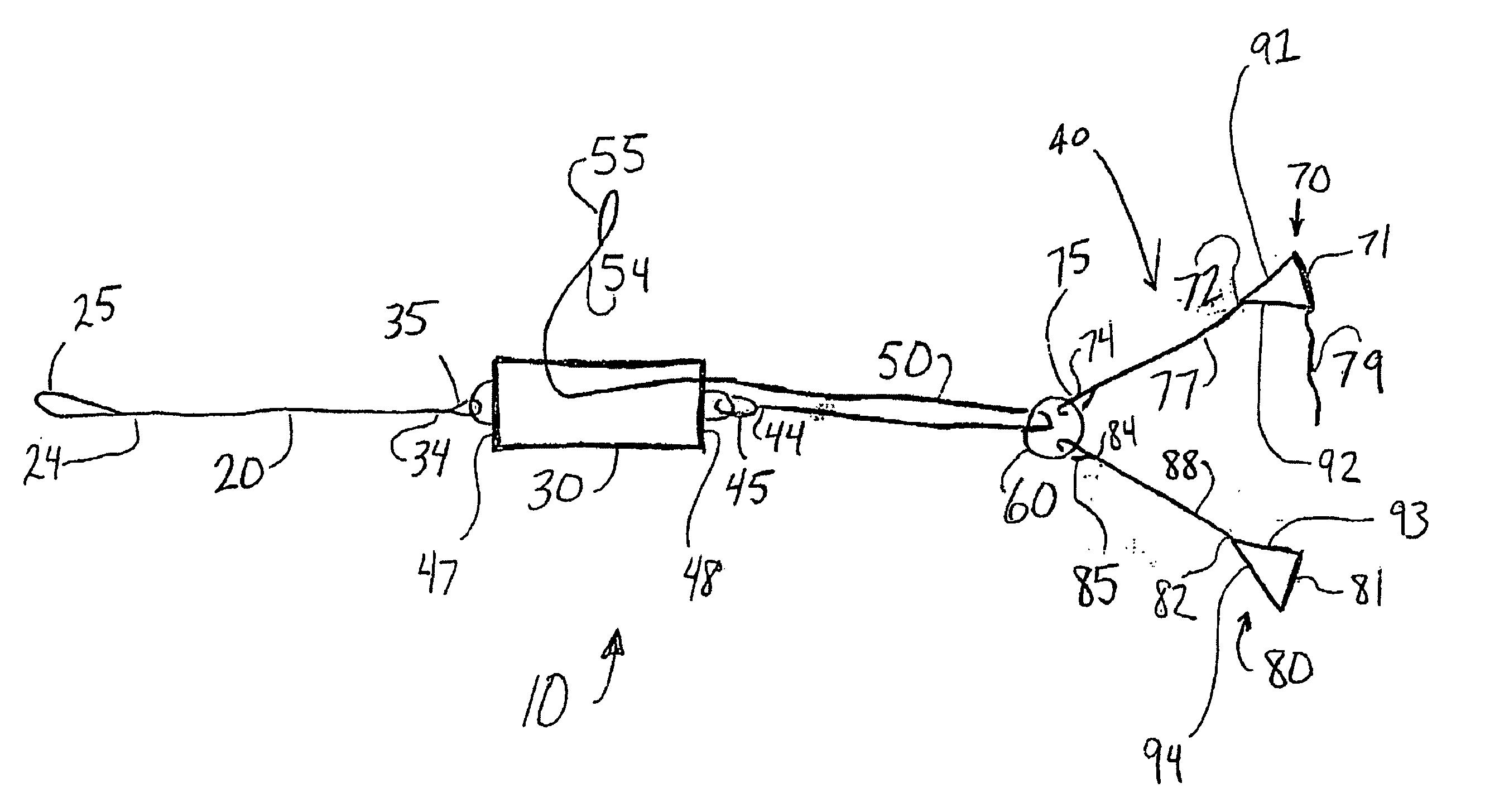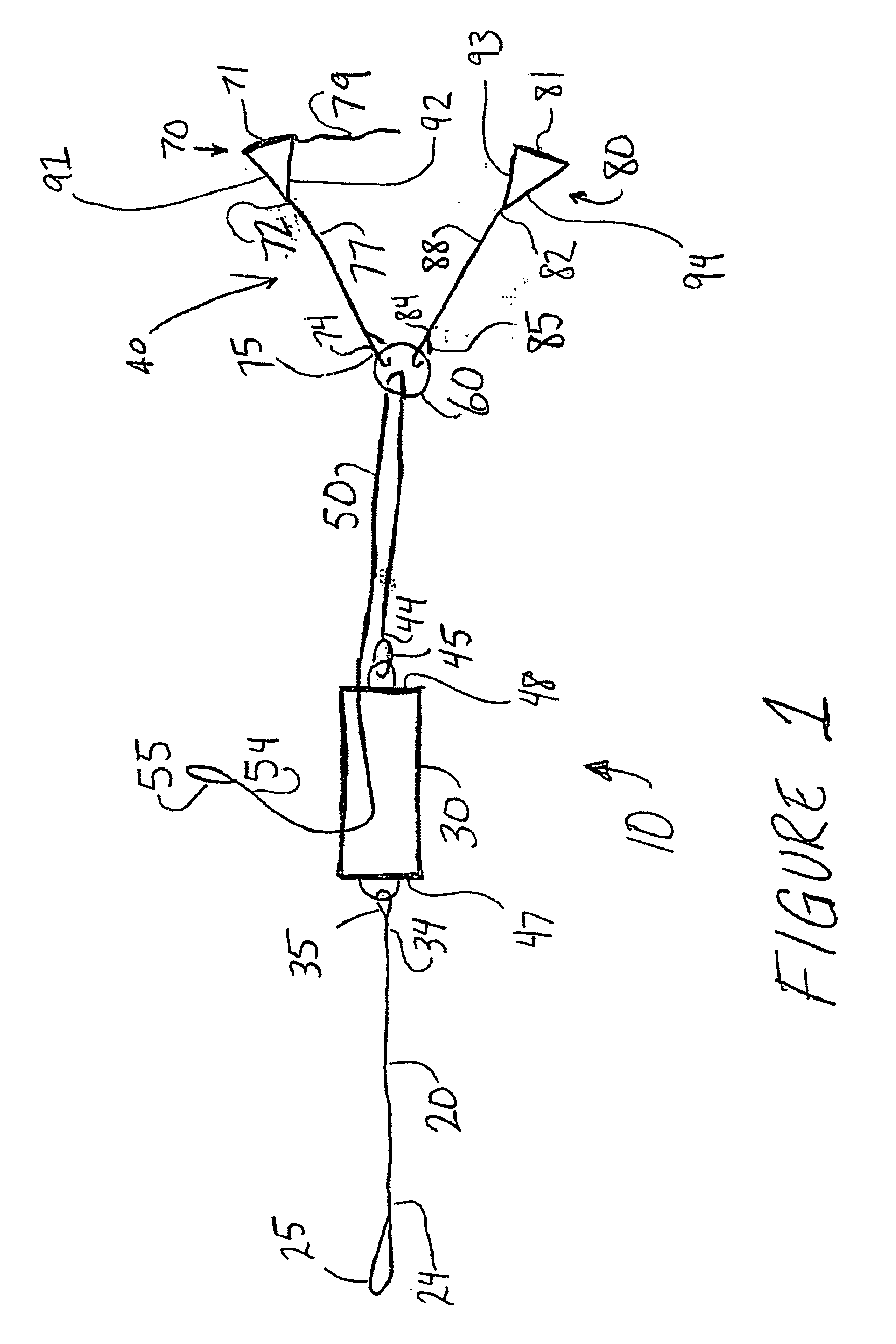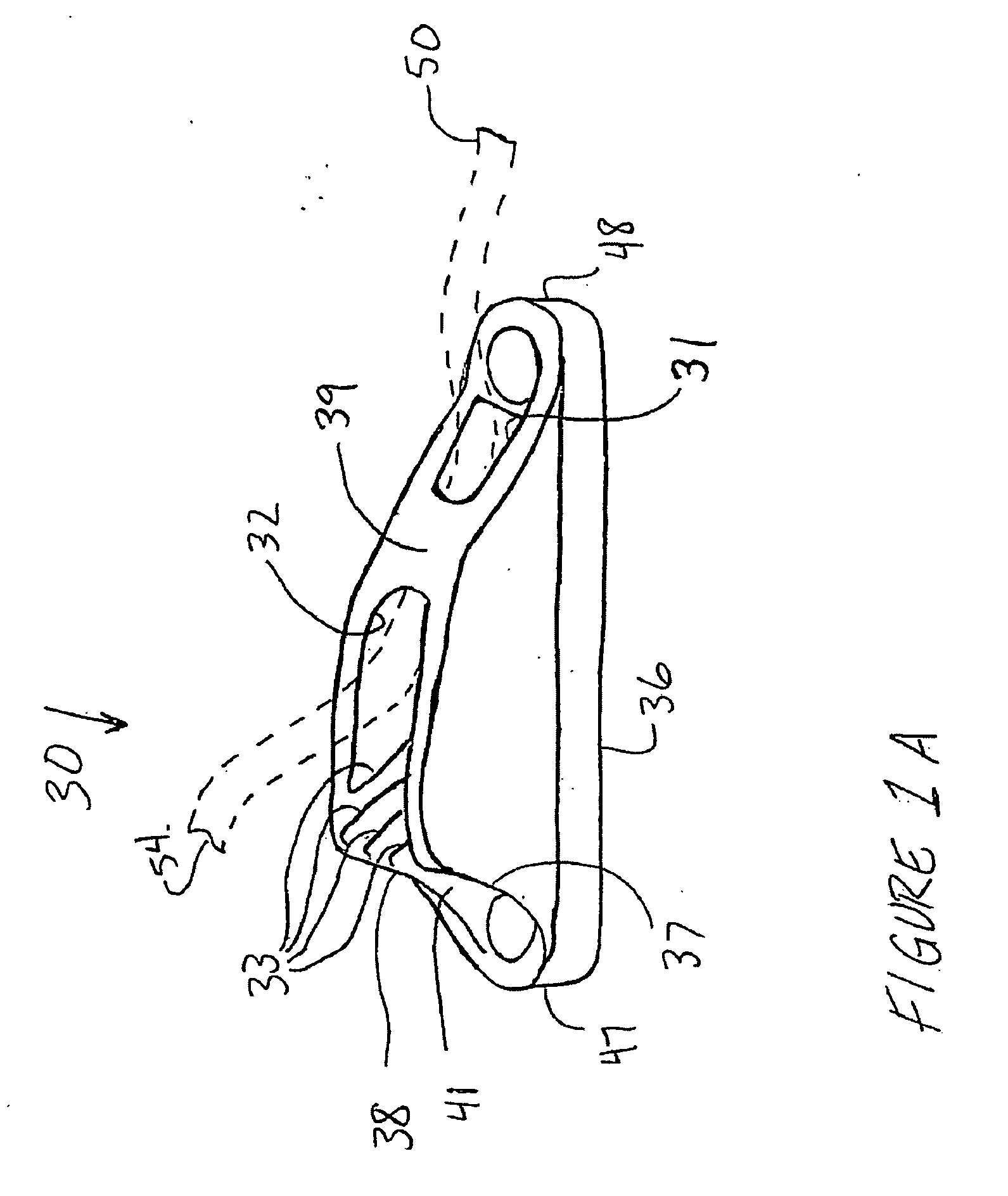Suspension trauma relief device
a technology for preventing suspension trauma and avoiding any constriction of the safety harness on the person's blood flow, which is applied in the direction of suspension devices, machine supports, safety belts,
- Summary
- Abstract
- Description
- Claims
- Application Information
AI Technical Summary
Benefits of technology
Problems solved by technology
Method used
Image
Examples
Embodiment Construction
[0023] The suspension trauma relief device includes a member extending from the safety harness “D”-ring to which the lanyard is attached. The relief device may be attached to the lanyard hook. The member provides a support for the wearer so that the wearer can take his / her weight off of the safety harness, and particularly the legs straps on the safety harness, to allow blood circulation and prevent suspension trauma. Preferably the member includes at least one foot support allowing at least one of the wearer's feet to be placed in the foot support to take the wearer's weight off the safety harness and avoid any constriction of the safety harness on the person's blood flow.
[0024] Referring initially to FIGS. 1-3, one preferred embodiment of the suspension trauma relief device 10 comprises an attachment member or strap 20 and a support assembly 40, both connected to an adjustment member 30. Strap 20 comprises a first end 24 with a connection member or loop 25 that can be used to att...
PUM
 Login to View More
Login to View More Abstract
Description
Claims
Application Information
 Login to View More
Login to View More - R&D
- Intellectual Property
- Life Sciences
- Materials
- Tech Scout
- Unparalleled Data Quality
- Higher Quality Content
- 60% Fewer Hallucinations
Browse by: Latest US Patents, China's latest patents, Technical Efficacy Thesaurus, Application Domain, Technology Topic, Popular Technical Reports.
© 2025 PatSnap. All rights reserved.Legal|Privacy policy|Modern Slavery Act Transparency Statement|Sitemap|About US| Contact US: help@patsnap.com



